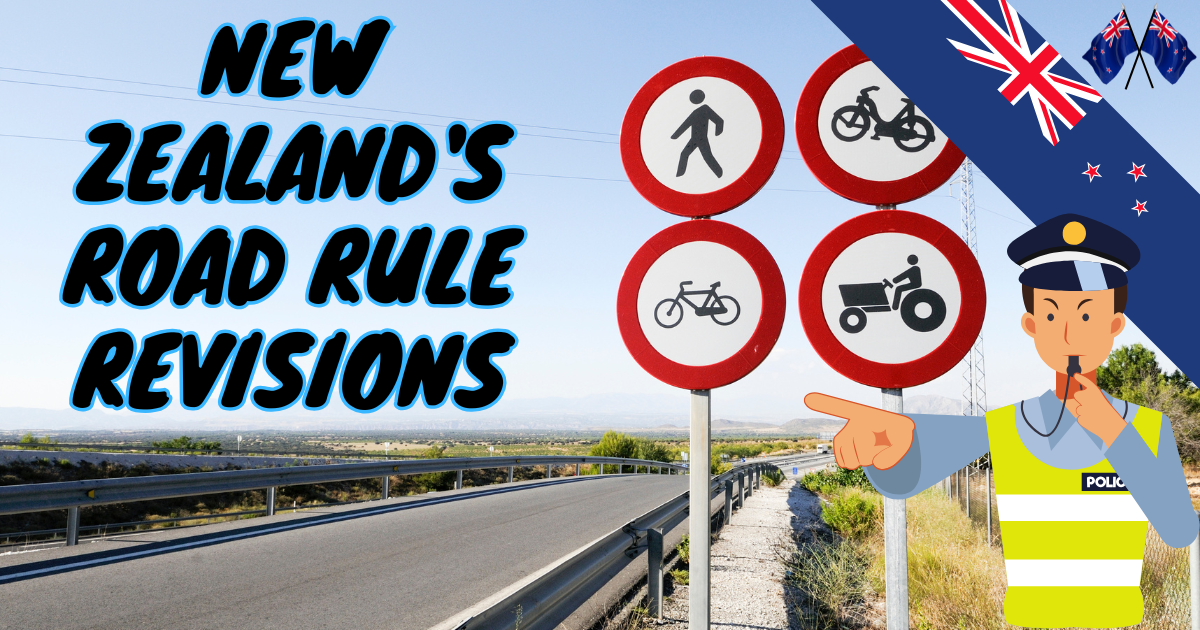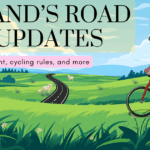New Zealand’s road rule revisions: From speed limits to mobile use. The Traffic Department of New Zealand and its government have set many road rules and regulations to reduce crashes and fatal injuries. The main point of minimizing accidents is to follow the speed limit set by the traffic police department on the road banners and to avoid the use of mobile phones while driving, as it can distract you. To know more about the topic “New Zealand’s road rule revisions: From speed limits to mobile use,” read the complete article.
New Zealand’s road rule revisions
There are certain rules set by the Road Controlling Authorities for New Zealand citizens to follow to reduce the number of road accidents. Road Controlling Authorities (RCAs) set speed limits for roads under their control. The New Zealand Transport Agency Waka Kotahi (NZTA) is the RCA for State highways and local councils are RCAs for local roads. Generally, the speed limits in New Zealand are set by the New Zealand Government. The Ministry of Transport’s road safety manager, Brent Johnston, who is heading the cross-agency project, said it will look at road design, car safety, and driver behavior.

We should remember that road safety is primarily our responsibility. Police are dedicated to reducing death and injury on our roads, and we should also take care that we are not breaking any rules and regulations, especially ones that can dangerously harm us or any other person. The people must be careful while driving about the lane they are in and keep an eye on all vehicles at the front and back. The speed must be adjusted according to various circumstances, such as the type of road, weather, place, crowd, traffic, etc.
From Speed Limits to Mobile Use
In New Zealand, the rules about driving are pretty strict. It includes following the speed limit and avoiding using any handheld phone while driving. In New Zealand, the maximum speed on open roads is usually 100 km/h, with select motorways allowing up to 110 km/h. Roads in New Zealand are frequently winding, narrow, and constructed around rocky terrain. Even major highways may have abrupt surface changes, steep inclines, or sharp bends.
Under the Land Transport (Road User) Rule 2004, drivers can’t use, while driving, a handheld mobile phone to:
- make, receive or terminate a telephone call
- create, send or read a text message or email
- create, send or view a video message
- communicate in a similar or any other way
Speed Limits in New Zealand
- All heavy vehicles are limited to 90 km/h unless stated otherwise below
- School buses are limited to 80 km/h
- Light vehicles towing trailers are limited to 90 km/h
- Heavy vehicles without suspension between the wheels and frame are limited to 45 km/h
- Electrically disabled motorbikes and all-terrain vehicles (ATVs) being towed are limited to 30 km/h
- Motorbikes or ATVs towing a trailer of more than half their weight are limited to 40 km/h
- Vehicles towing another vehicle without a rigid towing system (e.g. a rope or strop) are limited to 50 km/h
- Vehicles towing another vehicle with a rigid towing system are limited to 90 km/h
- Drivers on a limitations or full car licence towing an agricultural vehicle plus trailer for the purposes of agriculture are limited to 40 km/h
- Drivers on a full car licence driving a tractor-trailer pair for non-agricultural purposes are limited to 30 km/h
- Mopeds are usually mechanically restricted to around 50 km/h on flat roads
Important New Zealand Road Rules
- Stay at or below the legal speed limits indicated on road signs. The maximum speed on any open road is 100 km/h. The maximum speed in urban areas is 50 km/h. Adjust your speed as conditions demand.
- When traffic lights are red, you must stop. When traffic lights are amber, you must stop unless you are so close to the crossing it is unsafe to do so.
- Drivers and passengers must wear seat belts or child restraints at all times, in both front and rear seats.
- Do not drink and drive. Driving under the influence of alcohol or drugs is a felony in New Zealand.
- Directions follow standard international symbols and all distances are in kilometers (km).
- Driving while using a hand-held cellphone is strictly unlawful in New Zealand.
- It is prohibited to pass other cars where there is a yellow line instead of a white line marking the middle of the road. The yellow line signified that it’s too dangerous to overtake.


